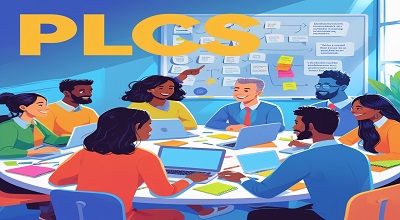Professional Learning Community
Professional Learning Community (PLC) are collaborative groups of educators who work together to improve teaching strategies and student learning outcomes. The concept, popularized by Richard DuFour and Robert Eaker, emphasizes continuous professional development through shared goals, collective inquiry, and reflective dialogue.
PLCs are not just meetings; they are structured, data-driven, and focused on student success. Schools worldwide use PLCs to foster teacher collaboration, enhance instructional practices, and adapt to evolving educational demands.
Key Characteristics of Effective PLCs
For a PLC to be successful, it must embody the following characteristics:
A. Shared Mission, Vision, and Values
All members must align on a common purpose—improving student learning.
B. Collaborative Culture
Teachers work in teams, sharing strategies and analyzing student data.
C. Focus on Results
PLCs use assessments to measure progress and adjust teaching methods.
D. Continuous Improvement
Educators engage in ongoing professional development and reflective practices.
E. Supportive Leadership
School administrators provide resources and encourage teacher collaboration.
Benefits of Professional Learning Community
PLCs offer numerous advantages, including:
- Enhanced Teacher Collaboration – Teachers share best practices and resources.
- Improved Student Achievement – Data-driven strategies lead to better learning outcomes.
- Increased Teacher Retention – Supportive environments reduce burnout.
- Adaptability to Change – PLCs help schools implement new curricula and technologies effectively.
Examples of Successful PLCs in Education
Example 1: DuFour’s Model in Illinois Schools
Many Illinois schools adopted DuFour’s PLC model, leading to significant improvements in literacy and math scores through weekly teacher collaboration.
Example 2: Singapore’s Teacher Learning Circles
Singapore’s Ministry of Education encourages PLCs where teachers co-plan lessons and review student performance data.
Example 3: Finland’s Collaborative Teaching Culture
Finnish educators meet regularly to discuss pedagogical innovations, contributing to Finland’s top-ranked education system.
Example 4: PLCs in Virtual Schools
Online schools use digital PLCs via platforms like Microsoft Teams to discuss student engagement strategies.
Latest Trends in PLCs (2025-2026)
- AI-Powered Data Analysis – PLCs use AI tools to assess student performance trends.
- Hybrid PLC Models – Combining in-person and virtual collaboration.
- Student-Involved PLCs – Some schools include student feedback in teacher discussions.
- Global PLC Networks – Educators connect internationally via social media and forums.
How to Implement a PLC in Your School?
- Form a Leadership Team – Identify passionate educators to lead the initiative.
- Set Clear Goals – Define measurable objectives (e.g., improving math scores by 10%).
- Schedule Regular Meetings – Weekly or bi-weekly sessions with structured agendas.
- Use Data Effectively – Analyze student assessments to guide discussions.
- Encourage Open Dialogue – Foster a non-judgmental space for idea-sharing.
Challenges and Solutions in PLCs
| Challenge | Solution |
|---|---|
| Lack of Time | Schedule PLCs during prep periods or early dismissals. |
| Resistance to Change | Provide training on PLC benefits. |
| Poor Participation | Incentivize involvement (e.g., certificates, leadership roles). |
FAQs About Professional Learning Community
Q1: How often should PLCs meet?
A: Ideally, weekly or bi-weekly for consistent progress.
Q2: Can PLCs work in small schools?
A: Yes, even small teams can collaborate effectively.
Q3: Do PLCs require administrative support?
A: Strong leadership ensures sustainability.
Conclusion
Professional Learning Community transforms schools by fostering collaboration, innovation, and student success. By implementing structured PLCs, educators can stay ahead of trends and continuously improve teaching practices.
